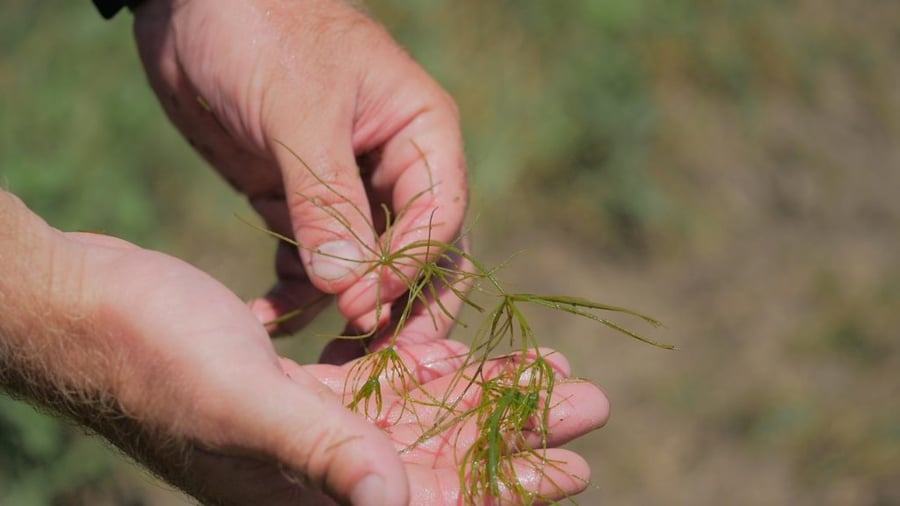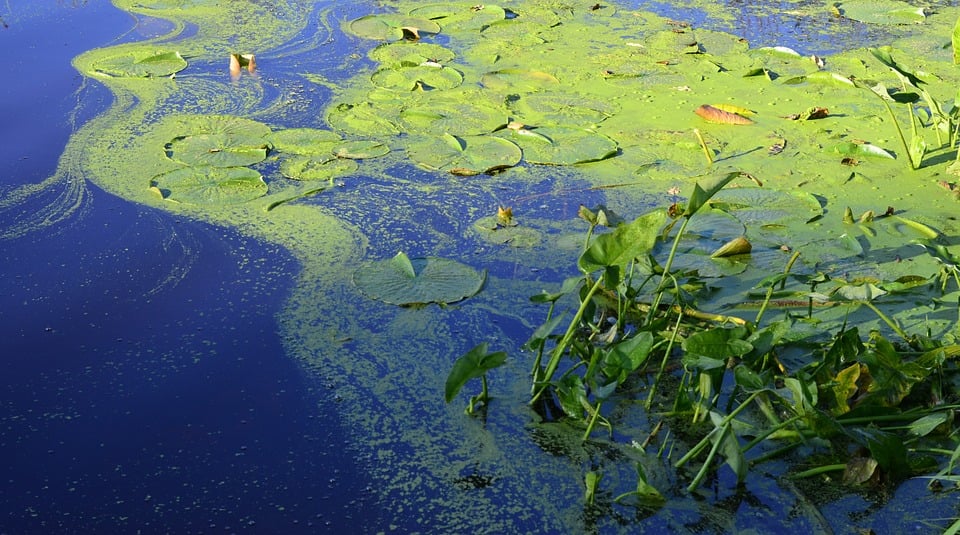Before diving into algae control, it is important to know that your best option for taking care of your algae problem is consulting a Pond King Biologist. Spring and summer are big seasons for plant growth as water gets warmer, and rain brings a fresh supply of nutrients into the system.
One of the most common issues with this is algae growth, and controlling it. When identifying algae, very often words like moss, seaweed, and pond scum are used incorrectly to identify filamentous algae.

Let’s set the record straight and go over the 3 most common types of algae that occur in ponds (hint: they aren’t moss, seaweed, and pond scum), and how to keep them under control.
Filamentous algae
Filamentous algae is often found attached to other plants, sticks, leaves, rocks, and mud. This is a microscopic algae interwoven in strands that form slick, slimy mats. As this type of algae grows, it stretches to the surface, and often breaks up lending new growth to be transported around the pond by wind and wave action.
Chara or skunkweed
Chara, or skunkweed, looks like a plant, but it is actually an algae. It does not have a flower or root system, and it is brittle to the touch. This algae gets its name because if you squeeze it, and then promptly smell it, it will emit a very strong odor reminiscent of skunk musk.
Coontail or hornwort
Coontail, or hornwort, is similar in appearance to other submerged plants but is actually a type of algae as well. The tip of each branch is overcrowded by growth and takes on the appearance of small raccoon tails. It usually is free floating, or wrapped on objects around the shoreline.

Now that we have gone over the most common types of algae, let’s go over the methods to used to control them. You can either use the biological method, or a chemical method.
Biological Algae Control
Let’s start with biological control. In the southern United States, biological control typically begins as early as spring when temperature allows for stocking of Mozambique Tilapia. Tilapia consume filamentous algae and reproduce, and consume, and reproduce, and so on and so on. Enough Tilapia within a pond can control a filamentous algae problem if stocked early in the season.
If you are dealing with Chara or Coontail, Triploid Carp are all fish effective of controlling these types of algae. Triploid Carp can be stocked in the Spring up to 5 per acre depending upon the vegetation problem. They will not reproduce successfully, and are long lived. Typically, noticeable reduction of growth does not occur until late in the season or following year.
Chemical Control of Algae
Chemical control of filamentous algae is typically treated with granular Cutrine. Granular chemicals are often used to spot treat specific areas, whereas liquid Cutrine can be applied to surface growth as well as subsurface growth.
Granular Cutrine will also be used to treat Chara. It is very effective at treating specific problematic spots of Chara. Coontail can be controlled using Aquathol, a contact herbicide. In some cases, Aquathol can be mixed with Cutrine to increase the effectiveness of a treatment.
Any liquid herbicide can be sprayed using a simple hand pump sprayer or a powered backpack sprayer, however they need to be mixed in appropriate ratios, and used sparingly. It is important to remember to consult a Pond King Biologist before treating on your own.



